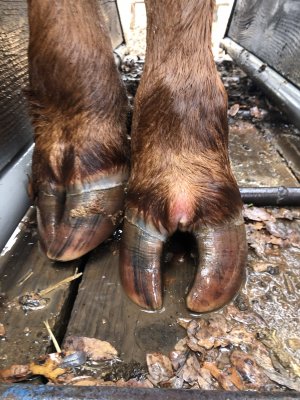ksmit454
Well-known member
First encounter with hoof rot today. I have had cattle for about a year and a half and boy am I learning. Noticed a limp, swelling. Got him in the chute and it seems to be hoof rot after sending pictures/info to my vet. Any tips/suggestions to prevent it? They are on pasture so not standing in muck all day but it has been very wet from lots of downpours. We cleaned and treated the area and will continue to treat with Dr. Naylor's hoof rot treatment. He's in the dry barn now.

